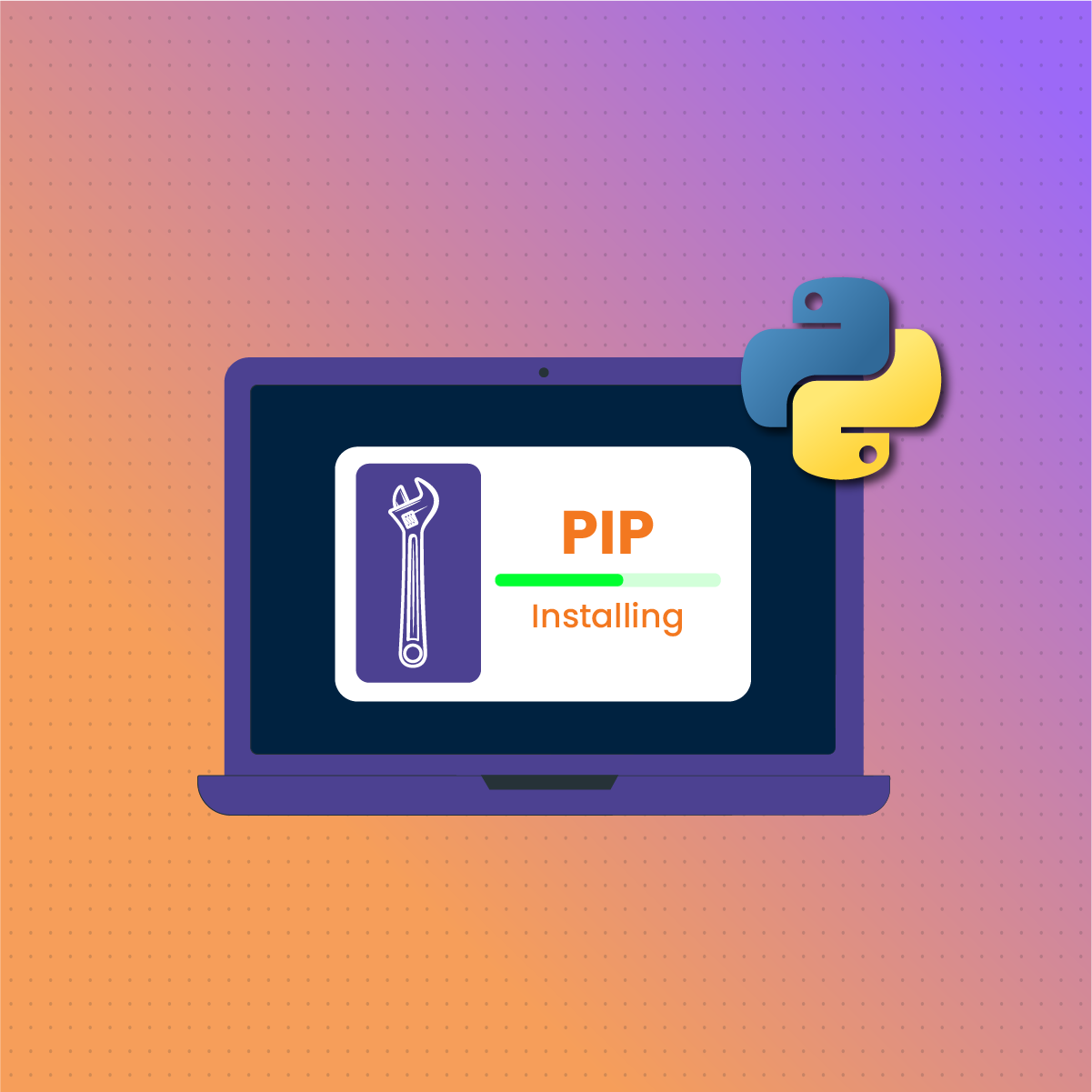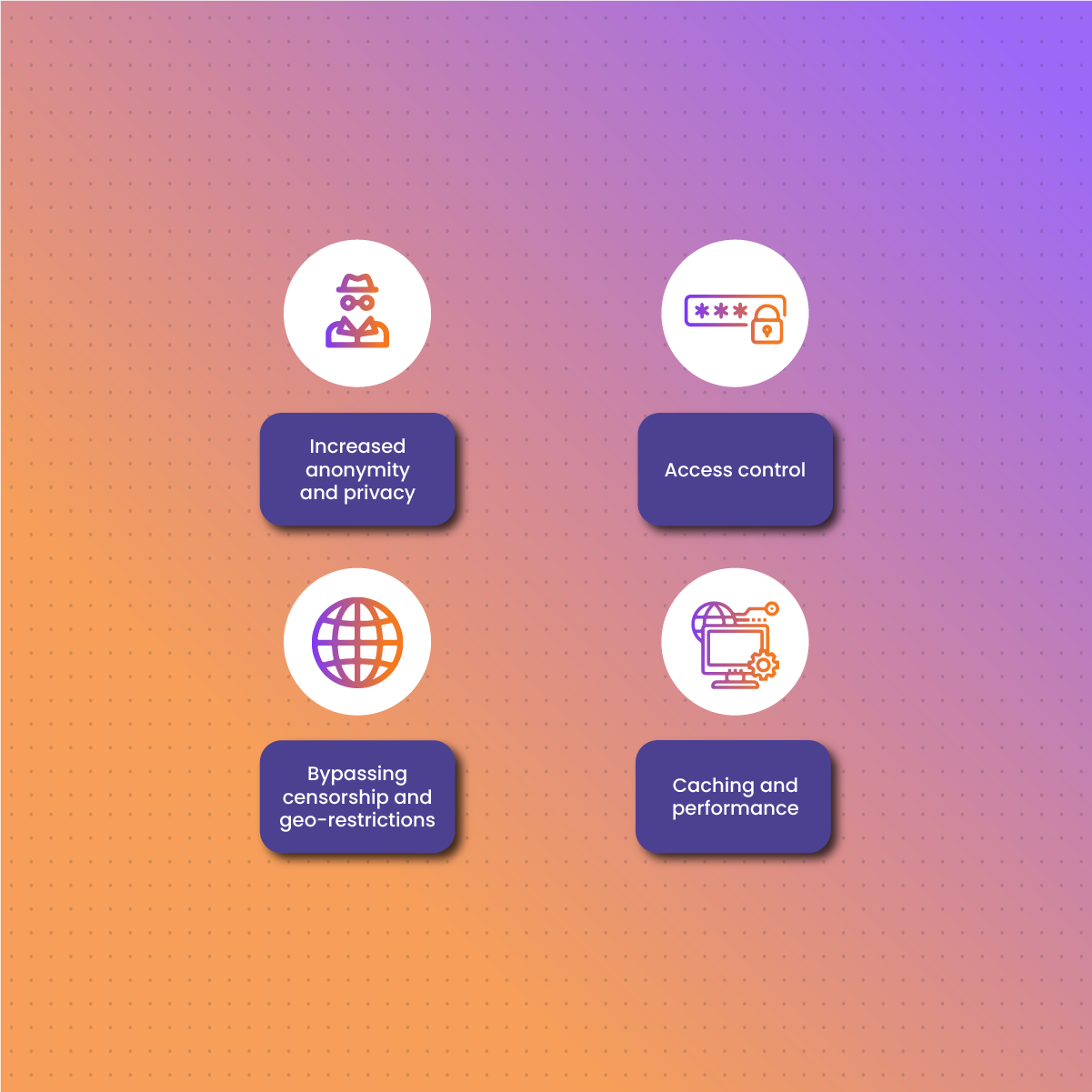Introduction To Using Pip With Proxies
Pip is the package manager for Python- one of the most popular and easy-to-use programming languages. This package manager allows you to install the Python packages and dependencies- the software component that your code needs to run efficiently that is not automatically provided by Python’s Standard Library. On the other hand, Python packages are a collection of Python codes containing one or more modules. Subsequently, these packages are available on the Python Package Index (PyPI) and can be installed with Pip.
A package manager is a programming language tool that allows developers to install any external dependencies with ease. In other words, it handles the installation and uninstalling of any package with ease. Therefore, Pip has become the standard package manager for Python.
Without a doubt, Pip is a crucial aspect of using Python to build a program. Using Pip with a proxy server ensures privacy, security, and anonymity. Therefore, this guide will explore how to use Pip with a proxy server, choosing the best proxy server, and FAQs.
How to Install Python Pip
Since Pip is the standard library, it comes pre-installed in the latest Python versions. Subsequently, Pip is automatically installed on your system if you downloaded the latest version from Python’s official website or you are working in a virtual environment.
To verify if Pip is available on your system, run the following command in your terminal:
$ pip –version
You should get an output like this:
pip 20.2.3 from c:\python39\lib\site-packages\pip (python 3.9)
This shows the current pip version and the location of Python in your system.
However, if Pip is not installed on your system, you can download and install it from here.
How to Install Packages with Python Pip
You can use the install command to install any package via Pip in Python. The syntax looks like this:
pip install <package-name>
For example, let us attempt to install one of the most popular Python libraries- Request Library:
pip install requests
You should get an output that looks like this:
Collecting requests
Using cached requests-2.26.0-py2.py3-none-any.whl (63 kB)
Requirement already satisfied: charset-normalizer~=2.0.0; python_version >= “3” in c:\python39\lib\site-packages (from requests) (2.0.7)
Requirement already satisfied: idna<4,>=2.4; python_version >= “3” in c:\python39\lib\site-packages (from requests) (2.10)
Requirement already satisfied: urllib3<1.27,>=1.20.1 in c:\python39\lib\site-packages (from requests) (1.26.6)
Requirement already satisfied: certifi>=2017.4.17 in c:\python39\lib\site-packages (from requests) (2021.5.30)
Installing collected packages: requests
Successfully installed requests-2.26.0
From the result above, the installation was successful, and you can import it and use it in your code with ease. Subsequently, Pip usually installs the package in the Python installation folder: <installation_folder_name>\python39\lib\site-packages.
Alternatively, when Pip is used with virtualenv, it will install the package in this path: <virtualenv_name>/lib/<python_ver>/site-packages.
To confirm the installation path of your packages, use the following code:
pip show <package-name>
What Is Pip?
Pip, which stands for Pip Installs Packages, is a widely used package manager for Python programming. It allows developers to efficiently download, install, and manage libraries and packages from the Python Package Index (PyPI) or other repositories. With Pip, you can install packages by simply running a command in your terminal or command prompt, automating tasks that would otherwise require manual downloads and configurations.
Some key features of Pip include:
- Package Management: Easily install, update, and uninstall Python libraries.
- Version Control: Specify and manage package versions to ensure compatibility with your project.
- Dependency Handling: Automatically download and install dependencies required by a package.
Pip has become an essential tool for Python developers, enabling them to streamline the development process and focus more on coding rather than managing libraries manually.
How does a Pip Proxy work?
Proxies act as intermediaries between your device and the internet. For example, you use Pip to write a program that collects data from websites. When you want to access the website, your device sends a request that goes through the proxy server instead of directly to the target website. Subsequently, the proxy receives the request and forwards it to the target website. As a result, it masks your actual IP address so that the target website cannot generate a unique browser fingerprint to identify and track your activities.
Once the target website processes the request, it sends the response back to the proxy server. The proxy server may modify it (for example, cache it for future requests) and forward it to your device. There are different types of proxies, and some of them include:
- HTTP proxies: They are designed to handle HTTP and HTTPS requests and are commonly used for web browsing.
- SOCKS proxies: These are more versatile than HTTP proxies because they can handle any type of traffic, including email, FTP, and more. However, they work on a lower level and are protocol-agonistic.
- Anonymous proxies: They work by masking the user’s IP address, which makes it difficult for the target server to identify your activities. In other words, these proxies forward your network traffic without any identifying information.
- SSL proxy: SSL proxies use the SSL protocol to send and receive data to optimize security and anonymity.
Significance of Using Pip with a Proxy Server
The use of Pip with a proxy server is useful in numerous situations, especially when security and anonymity are a priority. Here are some reasons to use a Pip with proxies:
Increased anonymity and privacy
Proxies work by masking your real IP address, which provides an additional layer of privacy. Subsequently, it helps you avoid getting tracked, especially when you visit websites with tracking cookies. In addition, proxies offer anonymity since the request being sent and received passes through an intermediary.
Access control
Some organizations and institutions may implement limitations that restrict access to certain websites. Therefore, proxies can act as an intermediary that allows access to blocked content. Similarly, educational institutions may restrict access to certain websites to prevent distractions and ensure optimal performance. If you find yourself in such situations, you may need to use a proxy to access restricted content.
Bypassing censorship and geo-restrictions
Some countries impose internet censorship to control citizen’s access to global information. Likewise, some Python packages may be restricted in some locations due to legal or policy concerns. Therefore, you can leverage proxies to bypass these censorship or geographical restrictions by using an IP address origination from a permitted location. Subsequently, when you use proxies to send a request to the website, it sees the request as coming from one of the permitted regions, so it does not block your IP.
Caching and performance
One unique feature of proxies is they can cache websites that you often visit. This is crucial in conserving bandwidth and reducing load times. For example, if various programmers on the same network need to download the same Python framework, like BeautifulSoup, the proxy can deliver the cached version, which significantly improves the installation speed. In addition, proxies help to optimize bandwidth usage as the network resources are used efficiently.
How to use Pip with a proxy server
Before we dive into learning how to use Pip with a proxy server, there are some things that you need to get. They include:
- Python- download the latest version from the official website and install it on your system.
- PIP- install the Python package manager as we have described above. However, downloading the latest version of Python is recommended because it comes with Pip, so you don’t need additional installation.
- Gather proxy information, which may include proxy server address (proxy.example.com), port number (5959), and authentication details (username and password are required when using premium proxies).
Since Pip supports basic HTTP-based authentication, the login credentials (username and password) can be embedded in the URL. In addition, Pip supports command line completions in bash.
To set up to use bash for proxy settings at a Linux command prompt, use the code below:
python -m pip completion –bash >> ~/.profile
Install Python packages through the proxy server by using the Pip –proxy command option to specify a proxy for the following formats:
For Windows users, enter:
pip install –proxy https://<usr_name>:<password>@<proxyserver_name>:<port#> <pkg_name>
For Linux users, enter:
https://<sudo pip install –proxy usr_name>:<password>@<proxyserver_name>:<port#> <pkg_name>
In some cases, the proxy server may only require a username, especially if you are using a free proxy.
pip install –proxy https://<usr_name>@<proxyserver_name>:<port#> <pkg_name>
In addition, you can install a requirements.txt file via a proxy by using the following command:
pip install –proxy https://<usr_name>@<proxyserver_name>:<port#> requirements.txt
How to Use PIP with Proxy Server in a Virtual Environment
You need to configure the proxy server environment variables when you have a proxy server between your virtual environment and the Python package.
For Windows users:
# Add to environment variables:
set HTTP_PROXY=<proxyserver_name>:<port#>
In addition, you can also adjust the environment variable: PIP_USER_AGENT_USER_DATAto contain a JSON-encoded string in the user-agent variable in Pip’s requests.
For Ubuntu Linux:
# Append below text pattern at the end of ‘~/.bashrc’:
HTTP_PROXY=https://<usr_name>:<password>@<proxyserver_name>:<port#>
Export HTTP_PROXY
Bear in mind that you need to export the variables after setting them so they are available to the outer shell session.
Choosing the Best Proxy for PIP
Several factors, including pricing, IP pool, speed, network coverage, customer support, and more, affect the choice of a proxy server. These factors are crucial as they determine the efficiency of the Pip proxy. One of the first factors that come into consideration is cost. Therefore, you need to allocate part of your operations budget to getting reliable, fast, and high-quality proxies. We do not recommend using free proxies due to the associated privacy and security risks.
NetNut is a reliable and reputable proxy provider with an extensive network of over 85 million residential proxies. NetNut rotating residential proxies are the ideal solution if you need to avoid IP bans and censorship.
NetNut provides ultra-fast proxies so that you don’t have to worry about any connection issues. In addition, you can enjoy 24/7 customer support from experts who will guide you to choose the best proxy for your needs.
In addition, NetNut proxies come with a guarantee of 99.9% uptime, which eliminates the chances of lag that can affect user experience. These proxies come with advanced features that allow your Python script to bypass CAPTCHA effectively.
Furthermore, NetNut has a specialized solution for those that work with smartphones. Mobile proxies include an actual IP address that routes your phone traffic through a mobile server to ensure high-level anonymity and security.
Alternatively, you can use NetNut Scraper API, which allows you to collect data from any part of the world. In addition, it organizes the data so that analysis and interpretation is made easy. NetNut Website Unblocker is another specialized solution that allows you to access blocked content.
Why Use Pip With Proxies?
Using Pip with a proxy server becomes necessary in specific scenarios where direct access to the internet is restricted or monitored. Proxies serve as intermediaries between your device and the internet, routing traffic through an alternate server. Here’s why you might use Pip with proxies:
- Bypassing Network Restrictions
In corporate or educational environments, access to external repositories like PyPI may be restricted due to firewall rules or network policies. Configuring Pip to use a proxy server allows you to bypass these restrictions and install the packages you need. - Enhanced Privacy and Anonymity
When downloading packages, your IP address is exposed to external servers. A proxy server masks your real IP address, providing an additional layer of privacy and anonymity during the installation process. - Geographic Accessibility
Some packages or repositories may be geo-restricted or inaccessible in specific regions. By routing Pip traffic through a proxy server in another location, you can overcome these limitations and access the required resources. - Improved Security
A proxy server can act as a filter, inspecting data traffic to block malicious packages or unauthorized requests. This ensures that only secure and legitimate data passes through to your system.
By configuring Pip with a proxy, developers can maintain a smooth workflow regardless of network restrictions or geographic barriers, ensuring uninterrupted access to essential tools and libraries.
Final Thoughts on Pip With Proxy Servers
This guide has examined how to use Pip with proxies. Since Pip is the standard manager of Python, it is crucial to integrate them with proxies to ensure anonymity. Proxies act as an intermediary between your device and the target website.
Some of the primary significance of using Pip proxies include security, anonymity, privacy, bypassing censorship, and geo-restrictions. However, you need to regularly update Pip so you can leverage the latest features to protect your Python script from vulnerabilities. In addition, use HTTPS proxy protocol as they provide encryption- data is transferred between the proxy server and your device in a secure way. Moreover, before you launch the pip proxy for a large project, be sure to test it to avoid disruptions in your activities.
Using a premium proxy like those provided by NetNut can make a significant difference in how your Python script works. Contact us today to get started!
Frequently Asked Questions
How can I use the SOCKS proxy with Pip?
SOCKS is a popular proxy protocol that can be used with Pip. Using it with Pip is quite straightforward- indicate the proxy type and details in the Pip command as shown below:
pip install package_name –proxy socks5://username:password@proxyserver:port
You must have obtained the proxy server, port, username, and password from the proxy provider. Replace them in the syntax above, and you will be ready to enjoy the privacy that comes with using a proxy.
What are some common issues with configuring pip proxy?
While setting up a pip proxy has several benefits, it still comes with some challenges. They include:
- Incorrect proxy URL format: This can lead to connection failures. However, you can avoid this issue by ensuring the proxy URL is formatted appropriately. In addition, special characters in usernames or passwords should be URL-encoded.
- Authentication errors: These could arise due to incorrect authentication details, including proxy username and password.
- SSL certificate verification issues: You could experience SSL certificate verification errors, especially when using HTTPS proxies. Therefore, you must ensure that the proxy SSL certificate is valid.
- Timeout errors: Timeout errors occur due to slow network connections such that the request is not successfully sent to the target website. Therefore, you need to ensure the proxy provides fast and reliable connections regardless of the number of requests.
Can I guarantee the safety of my proxy credentials when using Pip?
Yes, you can securely store your proxy configurations when using Pip. You can use environment variables instead of hardcoding them in configuration files or scripts. Subsequently, this approach maintains the privacy and integrity of the sensitive information.









